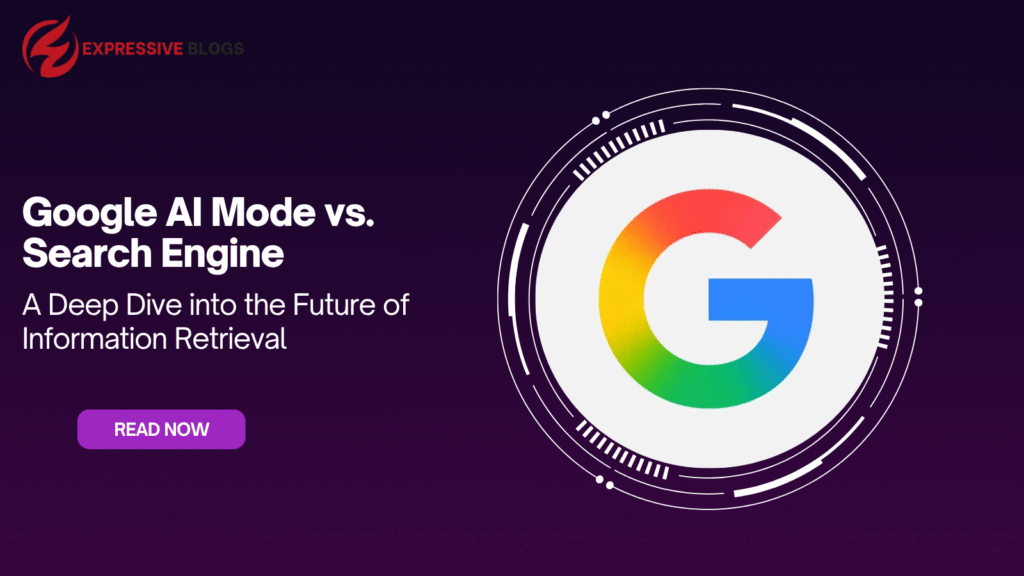Google search has been the clear leader in information retrieval for many years. Enter a question, and a ranked list of links pointing to possible answers will appear in milliseconds. However, Google’s new AI Mode puts the team at the vanguard of a fast-changing information access landscape. This is a significant change in the way we engage with information, not merely a small update.
However, what is Google AI Mode, and how does it compare to the conventional search engine? Let’s dive in and explore the key differences.
The Traditional Search Engine: A familiar Friend
The classic Google search is well-known and utilized by everyone. Its primary job is to search the world’s huge web, index pages using keywords and other criteria, and then provide you with a list of links that are most pertinent to your research question.
Key features of the Traditional Search Engines:
Link-based results give you a list of links to websites with information related to your search; it is up to you to investigate, assess, and combine the results. The results. The success of this method primarily depends on the keywords you use to direct the search, although it provides extensive coverage by accessing a great deal of material from any websites.
See more:google ai course free: A Complete Guide to Learning AI for Free & Boosting Your Career
Google AI Mode: The Intelligent Assistant
Google’s AI Mode is an example of a paradigm change. It uses the ability of large language models (LLMS) to comprehend your query in a deeper context, synthesize data from several sources, and bring you a direct, AI-generated response, instead of just offering links.
Key features of Google AI Mode:
This method eliminates the need to go through numerous links by producing succinct summaries, explanations, or original content directly on the results page. Instead of depending only on keywords to interpret complicated, conversational questions, it makes use of natural language comprehension. It generates responses that are relevant and cohesive by combining data from multiple sources. In order to facilitate a more conversational and participatory experience, some solutions even permit follow-up inquiries. Results can be made from individualized and customized over time by learning from user interactions.
Key Difference at a Glance
To better understand the distinction, let’s compare them side by side:
| Feature | Traditional Search Engine | Google AI Mode |
| Primary Output | List of Links | Direct, AI-Generated Answers |
| Information Processing | User-driven; requires manual review | AI-powered synthesis and summarization |
| Query Type | Best with specific keywords | Understands natural language and complex queries |
| Interaction Style | Primarily one-way (query -> results) | Potentially conversational with follow-up questions |
| Speed to Answer | Requires clicking and reading | Aims for immediate answers within the search page |
|
|
Both the AI Mode and the conventional search engine have advantages and are appropriate for certain kinds of queries:
Traditional Search Engine is ideal for:
Link-based search works best for in-depth research since it lets you examine various viewpoints and assess sources directly. When you know what kind of website or resources you’re looking for, and you need precise information. It can also be helpful. Finding primary materials, like research papers, official documents, or news pieces, is another area in which it shines. Lastly, you may use it to explore a lot of possibilities and find a variety of sources and points of view in a single search.
Google AI Mode excels at:
This method provides prompt replies to simple inquiries and is ideal for providing factual answers. It does a great job of summarizing material so you can get the main ideas without having to go through long pieces. Additionally, it can produce original content, which can help with content development, drafting, and brainstorming. Its comprehension of normal language allows you to ask a question conversationally, just like you would while speaking with a human. Additionally, it’s excellent for investigating new issues and effectively giving succinct summaries of uncharted territory.
The Future: A Hybrid Approach?
AI Mode is unlikely to ever fully replace the conventional search engine shortly. Rather, a hybrid strategy is probably where information retrieval is headed. In order to provide consumers with a seamless experience where they can take advantage of both the extensive coverage of the regular search and the intelligent summaries and direct responses of AI Mode, Google is probably going to further integrate AI Capabilities into its current search infrastructure.
Let’s say you are looking for the “best hiking trails near me”. You might find listings of websites and local directories using the conventional search method. However, if AI is included, you may also receive a condensed list of the best trails along with important details like length, difficulty, and current user ratings right in the search results, which might save you a lot of time and work.
Conclusion
An intriguing advancement in the way we access and use information is Google AI Mode. AI Mode provides a preview of a future in which information retrieval is more intelligent, effective, and conversational, even while the conventional search engine is still a strong and necessary tool. We may anticipate a more dynamic and customized search experience that meets a greater variety of information needs as these technologies develop further. Finding the ideal balance between the speed and intelligence of AI-powered summaries and responses and the breadth and depth of the traditional web will be crucial. How do you feel about Google AI Mode? In what ways do you think it will alter the way you look for information? Post your thoughts in the comments section below!



